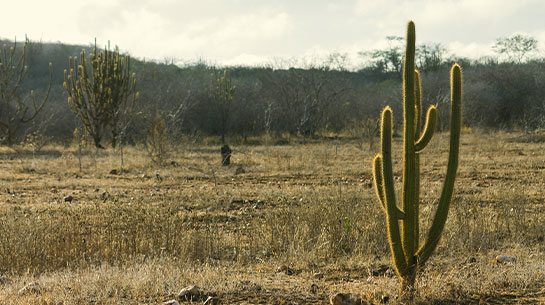- Products and Solutions

Caatinga: 100% brazilian biome
Rich in fauna and flora, Caatinga is a source of pride for Brazil for being a biome present exclusively in the North and Northeast of the country.
Brazil has six distinct natural regions, called biomes: the Amazon, Atlantic Forest, Cerrado, Pantanal, Pampas and Caatinga. On April 28, we celebrated the day of the only 100% Brazilian biome – Caatinga, present in the north and northeast of Brazil. Rich in fauna and flora, this biome is a source of pride for Brazil.
Caatinga characteristics
Caatinga covers an area of 844,453 km² and its entire limits are within Brazilian territory, that is, it is a 100% national biome. It covers 8 states in the Northeast: Piauí, Ceará, Rio Grande do Norte, Paraíba, Pernambuco, Alagoas, Sergipe, Bahia and Minas Gerais. This is equivalent to about 10% of the national territory and 70% of the Northeast region. It borders three other biomes in the country, the Amazon, Atlantic Forest and Cerrado.
The name Caatinga comes from Tupi-Guarani and means “white forest or woodland". This is because most plants lose their leaves in the dry season, thus prevailing a whitish landscape.
Caatinga is known for its semi-arid climate and has a rain system that divides the year into two periods: rainy and dry. The rainy season is short, lasting from 3 to 5 months, generally from January to May. The rains are abundant and irregular, concentrated in these first months of the year. The dry period lasts about 7 to 9 months, between June and December.
Spix's Macaw: a unique and threatened wealth
Due to its irregular climate, many people think that there are no species richness in this biome, which is not true. Caatinga is home to approximately 178 species of mammals, 591 of birds, 177 of reptiles, 79 species of amphibians, 241 of fish and 221 bees (MMA/IBAMA).
Many of the plant species have adapted to the climate, so many plants have leaves modified into thorns, the stems of trees have thick bark, and the vegetation loses its leaves during the dry season.
Animals, on the other hand, have adapted to consume the food available during the dry season, perform seasonal migrations to wetter places, accelerate the reproductive cycle during the rains or go into a dormant state during the drought.
For example, Caatinga is home to the Spix's Macaw, the bird with the highest risk of extinction in Brazil. The Lear's Macaw, the Red-necked Hummingbird, the Cane Toad, the Brown Deer, the Northeastern Marmoset and the Picazuro Pigeon are among the typical animals of the biome.
Caatinga and Neoenergia
All Neoenergia's Wind Farms are located within the Caatinga biome, with the Arizona and Rio do Fogo wind farms being in transition zone with the Atlantic Forest and the Caetité wind farms in transition zone with the Cerrado. Check the map below:
By working in compliance with the procedures of our Environmental Management System, we are helping to protect the Caatinga biome.
News
2025-12-12
Prêmio Brasil Olímpico 2025: Neoenergia reforça compromisso com esporte feminino no país
2025-12-09
Prêmio Aberje 2025: Neoenergia é campeã nacional com campanha sobre segurança na rede elétrica com Carlinhos Brown
2025-12-01
Exclusivo a mulheres negras, Prêmio Inspirar 2025, do Instituto Neoenergia, anuncia vencedoras em quatro estados e no DF
2025-11-27
Neoenergia e Honda se unem para acelerar uso do hidrogênio verde na mobilidade brasileira
2025-11-25
